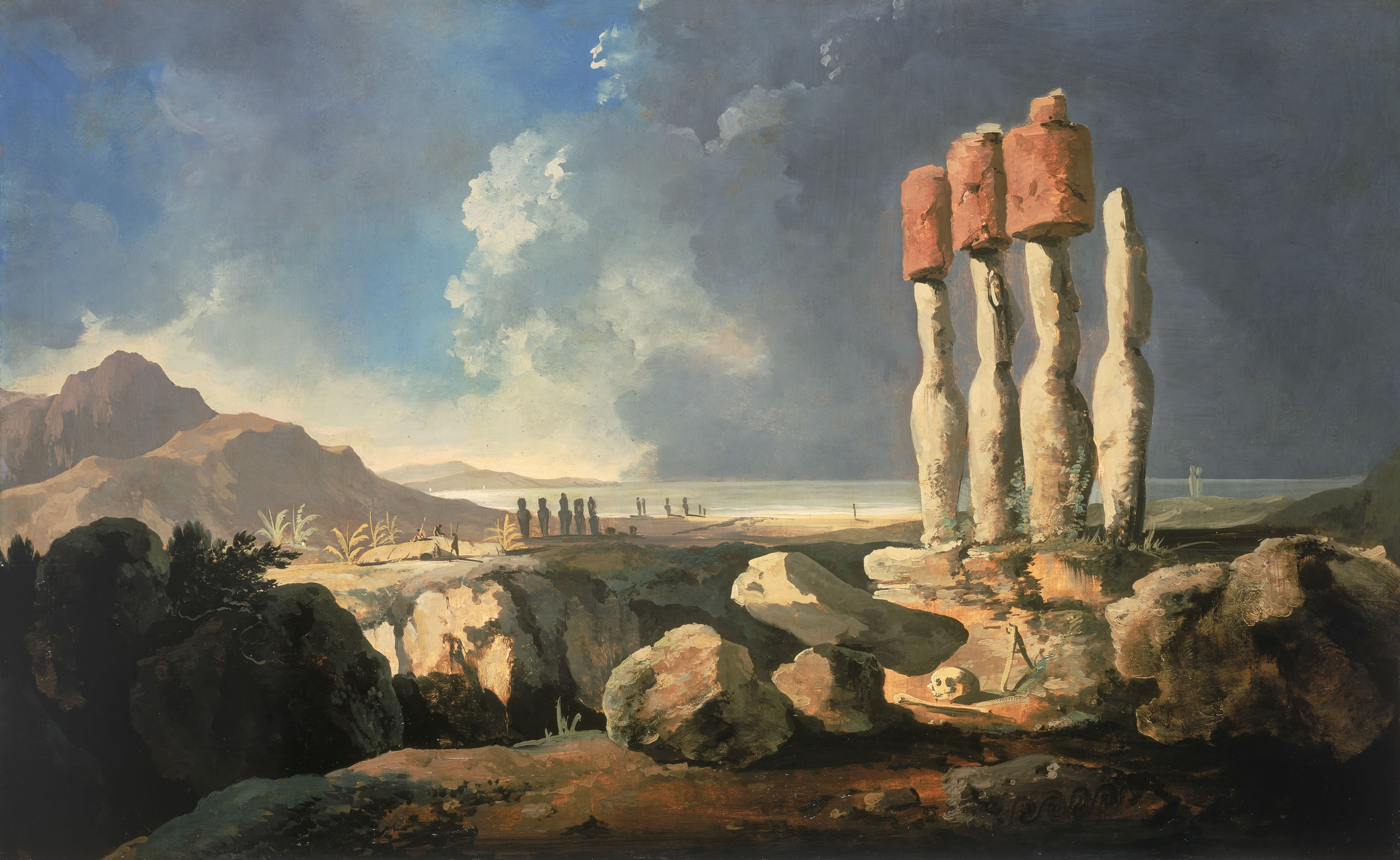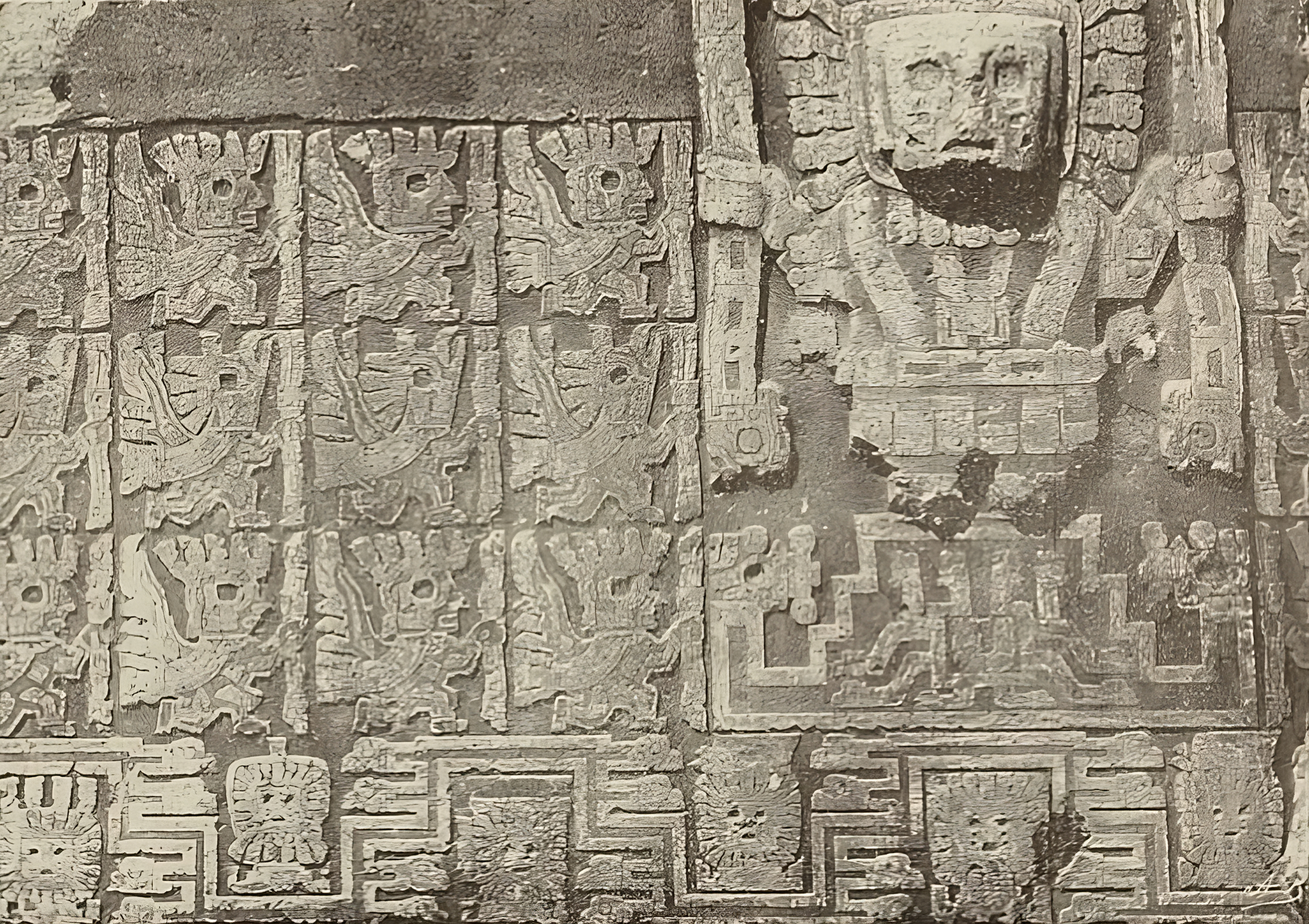|
Giuseppe Orefici
Giuseppe Orefici (1946 – 28 June 2025) was an Italian archaeologist noted for his studies of the Pre-Hispanic civilizations of the Nazca and Rapa Nui cultures. Life and career Orefici had a degree in architecture. Beginning in 1982, he was Director of the Nasca Project and has conducted several investigations in Peru, Bolivia, Chile, Mexico, Cuba, and Nicaragua. He directed archaeological excavations in the ceremonial center of Cahuachi (Peru) from 1984, Pueblo Viejo near Nazca (1983–85), Tiwanaku, Bolivia from 2007 to 2014, and Easter Island (1991–93, 2001). He published several books and articles on Nasca and Rapa Nui cultures and curated numerous exhibitions on pre-Hispanic culture in the Americas and in Europe. The most important research, which continues, is the archaeological excavation and conservation of Cahuachi. Orefici died on 28 June 2025, at the age of 79. Later research Orefici was Director of Centro de Estudios Arqueológicos Precolombinos, :es:Museo Arq ... [...More Info...] [...Related Items...] OR: [Wikipedia] [Google] [Baidu] |
Pre-Hispanic
In the history of the Americas, the pre-Columbian era, also known as the pre-contact era, or as the pre-Cabraline era specifically in Brazil, spans from the initial peopling of the Americas in the Upper Paleolithic to the onset of European colonization, which began with Christopher Columbus's voyage in 1492. This era encompasses the history of Indigenous cultures prior to significant European influence, which in some cases did not occur until decades or even centuries after Columbus's arrival. During the pre-Columbian era, many civilizations developed permanent settlements, cities, agricultural practices, civic and monumental architecture, major earthworks, and complex societal hierarchies. Some of these civilizations had declined by the time of the establishment of the first permanent European colonies, around the late 16th to early 17th centuries, and are known primarily through archaeological research of the Americas and oral histories. Other civilizations, contemporan ... [...More Info...] [...Related Items...] OR: [Wikipedia] [Google] [Baidu] |
Nazca Culture
The Nazca culture (also Nasca) was the archaeological culture that flourished from beside the arid, southern coast of Peru in the river valleys of the Nazca, Rio Grande de Nazca drainage and the Ica Valley.''The Nasca'' by Helaine Silverman and Donald A. Proulx. Blackwell Publishers. Malden. 2002. Strongly influenced by the preceding Paracas culture, which was known for extremely complex textiles, the Nazca produced an array of crafts and technologies such as ceramics, textiles, and geoglyphs. They are known for two extensive construction projects that would have required the coordination of large groups of laborers: the Nazca Lines, immense designs in the desert whose purpose is unknown, and puquios, underground aqueduct (water supply), aqueducts for providing water for irrigation and domestic purposes in the arid environment, several dozen of which still function today. The Nazca Province in the Ica Region was named for this people. History Time frame Nazca society develope ... [...More Info...] [...Related Items...] OR: [Wikipedia] [Google] [Baidu] |
Rapa Nui
Easter Island (, ; , ) is an island and special territory of Chile in the southeastern Pacific Ocean, at the southeasternmost point of the Polynesian Triangle in Oceania. The island is renowned for its nearly 1,000 extant monumental statues, called ''moai'', which were created by the early Rapa Nui people. In 1995, UNESCO named Easter Island a World Heritage Site, with much of the island protected within Rapa Nui National Park. Experts differ on when the island's Polynesian inhabitants first reached the island. While many in the research community cited evidence that they arrived around the year 800, a 2007 study provided compelling evidence suggesting their arrival was closer to 1200. The inhabitants created a thriving and industrious culture, as evidenced by the island's numerous enormous stone ''moai'' and other artifacts. Land clearing for cultivation and the introduction of the Polynesian rat led to gradual deforestation. By the time of European arrival in 1722, the i ... [...More Info...] [...Related Items...] OR: [Wikipedia] [Google] [Baidu] |
Cahuachi
Cahuachi, in Peru, was a major ceremonial center of the Nazca culture, based from about in the coastal area of Peru's central Andes. It overlooked some of the Nazca lines. The Italian archaeologist Giuseppe Orefici has been excavating at the site for the past few decades. The site contains over 40 mounds topped with adobe structures. The huge architectural complex covers (1.5 km²) at 365 meters above sea level. The American archeologist Helaine Silverman has also conducted long term, multi-stage research and written about the full context of Nazca society at Cahuachi, published in a lengthy study in 1993. Scholars once thought the site was the capital of the Nazca state but have determined that the permanent population was quite small. They believe that it was a pilgrimage center, whose population increased greatly preceding and during major ceremonial events. New research has suggested that 40 of the mounds were natural hills modified to appear as artifici ... [...More Info...] [...Related Items...] OR: [Wikipedia] [Google] [Baidu] |
Nazca
Nazca (; sometimes spelled Nasca; possibly from ) is a city and system of valleys on the southern coast of Peru. The city of Nazca is the largest in the Nazca Province. The name is derived from the Nazca culture, which flourished in the area between 100 BC and AD 800. This culture was responsible for the Nazca Lines and the ceremonial city of Cahuachi. They also constructed additional underground aqueducts, named puquios, in a regional system that still functions today. The first puquios are believed to have been built by the preceding Paracas culture. Nazca is the capital of the Nazca Province located in the Ica District of the Ica Region of Peru. Earthquake On November 12, 1996, at 11:59 a.m. local time (16:59 GMT) there was an earthquake of magnitude 7.5 with its epicenter at 7.7 km into the sea. The earthquake almost completely destroyed the city of Nazca and its surroundings. Due to its occurrence during the day, there were only 14 fatalities. However, ... [...More Info...] [...Related Items...] OR: [Wikipedia] [Google] [Baidu] |
Tiwanaku
Tiwanaku ( or ) is a Pre-Columbian archaeological site in western Bolivia, near Lake Titicaca, about 70 kilometers from La Paz, and it is one of the largest sites in South America. Surface remains currently cover around 4 square kilometers and include decorated ceramics, monumental structures, and megalithic blocks. It has been conservatively estimated that the site was inhabited by 10,000 to 20,000 people in AD 800. The site was first recorded in written history in 1549 by Spanish conquistador Pedro Cieza de León while searching for the southern Inca capital of Qullasuyu. Jesuit chronicler of Peru Bernabé Cobo reported that Tiwanaku's name once was ''taypiqala'', which is Aymara meaning "stone in the center", alluding to the belief that it lay at the center of the world. The name by which Tiwanaku was known to its inhabitants may have been lost as they had no written language. Heggarty and Beresford-Jones suggest that the Puquina language is most likely to have been the ... [...More Info...] [...Related Items...] OR: [Wikipedia] [Google] [Baidu] |
Easter Island
Easter Island (, ; , ) is an island and special territory of Chile in the southeastern Pacific Ocean, at the southeasternmost point of the Polynesian Triangle in Oceania. The island is renowned for its nearly 1,000 extant monumental statues, called ''moai'', which were created by the early Rapa Nui people. In 1995, UNESCO named Easter Island a World Heritage Site, with much of the island protected within Rapa Nui National Park. Experts differ on when the island's Polynesian inhabitants first reached the island. While many in the research community cited evidence that they arrived around the year 800, a 2007 study provided compelling evidence suggesting their arrival was closer to 1200. The inhabitants created a thriving and industrious culture, as evidenced by the island's numerous enormous stone ''moai'' and other artifacts. Land clearing for cultivation and the introduction of the Polynesian rat led to gradual deforestation. By the time of European arrival in 1722, the i ... [...More Info...] [...Related Items...] OR: [Wikipedia] [Google] [Baidu] |
Rapa Nui Culture
Rapa may refer to: People * Oltion Rapa (born 1989), Albanian footballer Places * Rapa Nui, the native name of Easter Island, a special territory of Chile * Rapa Iti, one of the Bass Islands in French Polynesia * Rapa, Poland, a village in Warmian-Masurian Voivodeship Rivers * Rapa River, a tributary of the Lesser Lule River in Sweden * Râpa (Mureș), a tributary of the River Mureș in Transylvania, Romania * Râpa (Vișa), a tributary of the Vișa in Sibiu County, Romania Other uses * Rapa language, the language of Rapa Iti, in the Austral Islands of French Polynesia * Rapa (gastropod), ''Rapa'' (gastropod), a genus of sea snails * Rapa, a name for the plant rapeseed (''Brassica napus'') * Rapa (TV series), ''Rapa'' (TV series), a Spanish television series See also * * Râpa (other) {{disambiguation, geo ... [...More Info...] [...Related Items...] OR: [Wikipedia] [Google] [Baidu] |
National Geographic
''National Geographic'' (formerly ''The National Geographic Magazine'', sometimes branded as ''Nat Geo'') is an American monthly magazine published by National Geographic Partners. The magazine was founded in 1888 as a scholarly journal, nine months after the establishment of the society, but is now a popular magazine. In 1905, it began including pictures, a style for which it became well known. Its first color photos appeared in the 1910s. During the Cold War, the magazine committed itself to present a balanced view of the physical and human geography of countries beyond the Iron Curtain. Later, the magazine became outspoken on environmental issues. Until 2015, the magazine was completely owned and managed by the National Geographic Society. Since 2015, controlling interest has been held by National Geographic Partners. Topics of features generally concern geography, history, nature, science, and world culture. The magazine is well known for its distinctive appearance: a ... [...More Info...] [...Related Items...] OR: [Wikipedia] [Google] [Baidu] |
Nicola Masini
Nicola Masini (born 1965) is an Italian scientist with CNR, noted for his work on exploring traces of Andean civilizations in Peru and Bolivia using spatial technologies and Remote Sensing. Biography He graduated in Engineering in 1990. He became Researcher with the Consiglio Nazionale delle Ricerche in 1995, Senior scientist at CNR-IBAM in 2003, Research Director of CNR-Institute of heritage Science in 2020, Professor of Fundamentals of Restoration at the University of Basilicata since 2002, Editor in Chief of Heritage. His dominant scientific interest is the application and the development of new approaches to archaeological research by integrating satellite remote sensing, LiDAR and geophysical prospecting. He has been directing Italian Conservation heritage and Archaeogeophysics Mission in Peru since 2007. From 2007 to 2015, he has been directing several scientific investigations at the Nasca ceremonial center of Cahuachi, Pachacamac, Tiwanaku, Machu Picchu, Chankillo, ... [...More Info...] [...Related Items...] OR: [Wikipedia] [Google] [Baidu] |
1946 Births
1946 (Roman numerals, MCMXLVI) was a common year starting on Tuesday of the Gregorian calendar, the 1946th year of the Common Era (CE) and ''Anno Domini'' (AD) designations, the 946th year of the 2nd millennium, the 46th year of the 20th century, and the 7th year of the 1940s decade. Events January * January 6 – The 1946 North Vietnamese parliamentary election, first general election ever in Vietnam is held. * January 7 – The Allies of World War II recognize the Austrian republic with its 1937 borders, and divide the country into four Allied-occupied Austria, occupation zones. * January 10 ** The first meeting of the United Nations is held, at Methodist Central Hall Westminster in London. ** ''Project Diana'' bounces radar waves off the Moon, measuring the exact distance between the Earth and the Moon, and proves that communication is possible between Earth and outer space, effectively opening the Space Age. * January 11 – Enver Hoxha declares the People's Republic ... [...More Info...] [...Related Items...] OR: [Wikipedia] [Google] [Baidu] |







